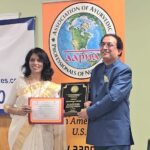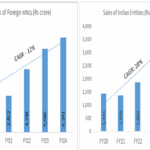- Urban men and youngsters are at an increased risk
- In women, risk increases post menopause
New Delhi, September 4, 2017: As per reports, India witnesses about two million heart attacks every year with majority of the victims being youngsters. One person dies every 33 seconds in India due to a heart attack and Indians are becoming victims 10 years ahead of the people in the West. IMA indicates that men who live in urban areas are thrice at a risk for this condition as those living in villages. In women, the risk increases significantly after menopause.
Some factors that lead to a heart attack include diabetes, smoking, high blood pressure, genetic history, and lifestyle issues such as intake of processed food and lack of physical activity. Although India has the highest rate of heart attacks in the world, it is possible to prevent many of these incidences with timely prevention and management.
Speaking about this, Padma Shri Awardee Dr K K Aggarwal, National President Indian Medical Association (IMA) and President Heart Care Foundation of India (HCFI) and Dr RN Tandon – Honorary Secretary General IMA in a joint statement, said, “A heart attack (clinically known as myocardial infarction) is the permanent damage or death of the heart muscles due to lack of oxygen-rich blood. People often ignore chest pain as a sign of acidity or gastric trouble. However, overlooking such warning signs can be detrimental particularly when the person has chances of getting a heart attack either due to lifestyle or genetic factors. If a person experiences any discomfort or exertion after walking, and the same persists even after taking rest, it could be linked to the heart. Under such circumstances, it is imperative to visit a doctor and take appropriate action.”
It has been seen that the lack of knowledge often causes a delay in handling the situation during a heart attack. This could aggravate the damage and in some cases, prove to be fatal.
Adding further, Dr Aggarwal, said, “Most lifesaving medications given during a heart attack work best only when given within one or two hours of experiencing the first symptoms, when the cardiac damage is limited. Thus, in such cases time is muscle. Recognizing the early symptoms and immediate medical attention can save many lives. Apart from this, following Dr KK Aggarwal’s formula of 80 can go a long way in preventing damage to the heart.”
● Diet Eating fewer calories has been shown to reduce the chances of developing heart attack. One should not eat more than 80 g or 80 ml of caloric food in any meal. The less you eat the more you live. Also, one should not eat cereals for up to 80 days in a year. Eating cereals every day is responsible for high insulin levels with insulin resistance.
● Exercise Adequate walking and exercise duration per day is 80 minutes. Cardiovascular training exercise involves walking 80 steps a minute for 80 minutes a week. Cardiovascular exercise involves attaining 80% of target heart rate.
● Time to yourself One should give at least 80 minutes of time to oneself in a day including time for meditation, getting absorbed in the present work, relaxing, and fulfilling your hobby. Smile and laugh whenever you can 80 times a day.
● Pranayama One should do 80 alternate nostril pranayama every day.
● Alcohol For those who consume social drinks (with no contraindications) the dose should be less than 80 g in 1 week. In women, it should be 80 g in 2 weeks.
● Clapping Those who believe that clapping is good for the health should clap 80 times a day.







